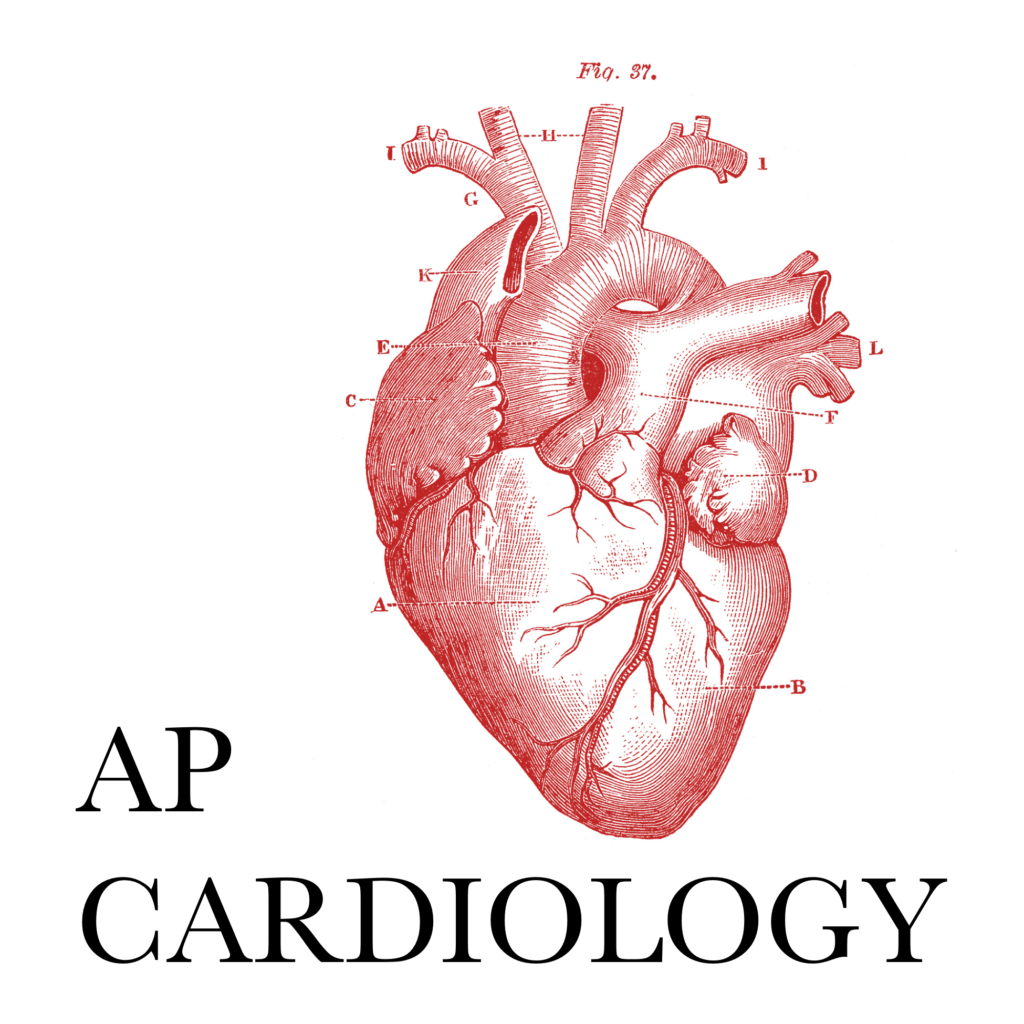Comprehending the Value of Cardiology in Modern Medical Care Providers
Cardiology plays a critical role in modern healthcare, particularly as heart problem remains to be the leading cause of mortality worldwide. Advancements in diagnostics and treatment have transformed client care, enabling earlier interventions and improved results. The change towards precautionary cardiology equips people to handle their wellness proactively. As modern technology proceeds to evolve, the assimilation of cutting-edge services may even more redefine cardiology's influence on public health, prompting a more detailed evaluation of emerging trends and their ramifications.
The Prevalence of Cardiovascular Disease and Its Influence On Public Wellness
Although cardiovascular disease remains the leading reason of fatality worldwide, its impact expands far past private patients to influence public health and wellness systems and economic situations. The high occurrence of heart problem positions a considerable pressure on health care sources, requiring raised funding for rehab, therapy, and prevention programs. Public health and wellness initiatives need to resolve risk aspects such as obesity, cigarette smoking, and less active lifestyles, which add substantially to the rising occurrence of heart conditions.Moreover, the financial burden connected with cardiovascular disease is immense, including not just straight clinical costs however likewise indirect expenditures connected to lost efficiency and early death. Areas face challenges in handling these expenses, usually leading to variations in health care gain access to and end results. As the populace ages and lifestyle-related threats proceed to escalate, the urgency for effective cardiology interventions becomes critical. As a result, attending to cardiovascular disease is not just an issue of specific wellness yet likewise an essential public wellness top priority.
Advances in Cardiac Diagnostics and Imaging Techniques
Current innovations in heart diagnostics and imaging techniques have actually transformed the area of cardiology, enhancing the capability to keep an eye on and discover heart illness. Techniques such as heart MRI, CT angiography, and echocardiography have actually ended up being increasingly sophisticated, giving in-depth pictures of cardiac frameworks and functions. These modalities enable the very early identification of problems like coronary artery illness, cardiac arrest, and valvular disorders.Moreover, innovations in non-invasive diagnostics, such as wearable innovation and remote monitoring tools, have empowered individuals and doctor. These devices help with real-time tracking of heart rhythms and various other important indicators, causing prompt interventions. Additionally, expert system is being incorporated into imaging analysis, boosting accuracy and performance in diagnosis.
Innovations in Therapy Alternatives for Heart Conditions
Current advancements in cardiology have actually led to considerable innovations in treatment alternatives for heart conditions. These consist of innovative surgical methods that boost procedural results and arising medications that use brand-new avenues for treatment. As the area evolves, these advancements play a vital function in improving individual care and results.
Advanced Surgical Techniques
Technologies in surgical strategies have changed the landscape of cardiology, offering new wish for patients with heart conditions. Minimally invasive procedures, such as catheter-based treatments, have actually substantially reduced healing times and healthcare facility remains. Strategies like robotic-assisted surgical procedure enhance precision, allowing cosmetic surgeons to navigate complicated physiological frameworks with better precision. Advancements in imaging technology help with real-time visualization during procedures, improving end results. Transcatheter aortic shutoff substitute (TAVR) exhibits an innovation in dealing with aortic stenosis, enabling valve replacement without open-heart surgical treatment. Furthermore, hybrid methods that integrate catheter-based and surgical approaches give customized options for different cardiac issues. These innovative medical methods not only boost person security however also increase therapy options, underscoring the critical duty of advancement in contemporary cardiology practices.
Arising Treatments and medicines
As the landscape of cardiology remains to advance, emerging therapies and drugs play an essential role in boosting treatment options for heart disease. Developments such as unique anticoagulants and advanced lipid-lowering representatives have actually transformed the management of heart diseases, significantly reducing individual morbidity and mortality. Furthermore, the development of genetics treatments and regenerative medicine supplies appealing methods for treating problems previously considered irreparable. Scientific trials are continuously disclosing the effectiveness of these treatments, pushing the limits of typical treatments. In addition, the integration of electronic wellness technologies assists in personalized medicine, permitting for customized treatment plans based upon hereditary and lifestyle elements. Jointly, these innovations emphasize the dynamic nature of cardiology, improving client results and redefining criteria of treatment in modern-day healthcare.
The Role of Preventive Cardiology in Client Care
Precautionary cardiology plays a necessary duty in person treatment by concentrating on the recognition of threat factors that add to heart problem. Through lifestyle modification strategies and early detection strategies, doctor can effectively reduce the incidence of cardiovascular occasions - Cardiology Jupiter. This proactive approach not only boosts person end results however likewise promotes long-term health
Threat Variable Recognition
While cardiovascular diseases continue to be a leading reason for morbidity and death worldwide, efficient risk variable recognition functions as a cornerstone of preventive cardiology. Recognizing danger elements such as hypertension, household, hyperlipidemia, and diabetes history is essential for very early intervention. Medical care experts utilize different screening approaches to review these aspects, enabling customized preventive actions. Furthermore, recognizing an individual's lifestyle options, such as smoking and physical lack of exercise, further notifies threat evaluations. This thorough analysis allows medical professionals to establish tailored care strategies aimed at mitigating threats. By prioritizing threat factor recognition, healthcare systems can improve person outcomes and decrease the total burden of heart diseases, inevitably contributing to enhanced public wellness strategies and resource allowance.
Way Of Living Modification Techniques
A wide variety of researches highlights the critical function of way of life alteration approaches in reducing cardiovascular illness danger. These methods incorporate nutritional adjustments, increased exercise, cigarette smoking cessation, and weight administration. By embracing a heart-healthy diet plan abundant in fruits, veggies, entire grains, and lean healthy proteins, people can reduce cholesterol degrees and blood stress. Routine exercise reinforces the heart and boosts total cardio wellness. In addition, stopping cigarette smoking considerably minimizes the danger of cardiovascular disease and improves healing rates for those with current conditions. Weight management even more adds to cardiovascular wellness by minimizing various other threat aspects such as diabetic issues and hypertension. Executing these lifestyle changes not just advertises private well-being yet additionally functions as a foundation of preventive cardiology in person treatment.
Early Detection Strategies
Way of life modifications greatly add to minimizing cardiovascular disease threats, however they are most effective when coupled with very early detection strategies. Precautionary cardiology emphasizes the relevance of determining possible heart problems before they rise into significant conditions. Techniques such as blood pressure surveillance, cholesterol screening, and progressed imaging innovations like echocardiograms play crucial duties in assessing cardio health and wellness. Biomarkers and hereditary testing additionally enhance the accuracy of early detection, permitting tailored preventative techniques. Normal cardiac danger evaluations equip healthcare suppliers to intervene proactively, potentially protecting against cardiovascular disease and strokes (Dr Garcia). By integrating these very early discovery methods into regular treatment, clients can take advantage of prompt lifestyle interventions and targeted therapies, inevitably boosting and improving results top quality of life
Integrating Modern Technology Into Cardiology Practices
As developments in innovation remain to improve various fields, the combination of ingenious devices and systems right into cardiology techniques has actually become vital for boosting person treatment and end results. Telemedicine platforms permit cardiologists to keep track of clients from another location, enhancing accessibility to care while minimizing the worry on medical care centers. Wearable tools, such as smartwatches, enable continuous heart rate monitoring, alerting both patients and physicians to potential issues in real-time. Additionally, expert system (AI) is being made use of to assess substantial quantities of heart information, helping in early diagnosis and tailored therapy strategies. Advanced imaging techniques, consisting of 3D echocardiography, visit the website enhance visualization of heart structures, causing much more accurate interventions. Electronic health and wellness records (EHRs) streamline patient info administration, making sure that cardiologists have instant access to crucial information. With each other, these technological advancements are changing cardiology, promoting proactive monitoring and boosted health and wellness outcomes for people with cardiovascular conditions.
The Significance of Patient Education And Learning and Engagement
Individual education and interaction play a pivotal function in the monitoring of cardio wellness. By gearing up people with knowledge concerning their conditions, treatment alternatives, and lifestyle modifications, medical care companies encourage individuals to take an active duty in their care. This positive technique can lead to enhanced adherence to recommended drugs, dietary modifications, and workout routines, ultimately decreasing the threat of complications.Engagement additionally fosters a strong patient-provider connection, urging open interaction and trust. When clients feel notified and entailed, they are most likely to voice issues and ask concerns, which can cause far better professional outcomes. Additionally, educational resources, such as workshops or digital platforms, can enhance understanding and promote self-management techniques. Generally, focusing on individual education and learning and interaction is crucial try these out for boosting cardio wellness, boosting lifestyle, and lowering medical care expenses connected with cardio illness.
Future Patterns in Cardiology and Their Prospective Impact

Regularly Asked Concerns
What Way Of Life Changes Can Reduce Heart Condition Threat?
The present question addresses lifestyle adjustments that can considerably minimize heart disease risk. Dr Garcia. Taking on a balanced diet, involving in routine physical activity, keeping a healthy weight, taking care of anxiety, and preventing cigarette can significantly improve cardio health and wellness
How Can I Identify Early Indicators of Heart Issues?
Identifying early indicators of heart issues involves tracking symptoms such as upper body pain, lack of breath, fatigue, and uneven heartbeat. Timely recognition of these signs can motivate required clinical assessment and treatment for better results.
What Are the Differences Between Cardiologists and Heart Surgeons?
The differences between cardiologists and heart cosmetic surgeons depend on their roles; cardiologists mostly detect and manage heart conditions via non-invasive methods, while cardiac doctors perform surgeries to correct structural heart problems. Each plays an essential, distinct function.

How Frequently Should I Get My Heart Wellness Checked?
The regularity of heart checkup varies based on specific danger elements. Generally, grownups must undergo evaluations each to two years, while those with status quo may call for even more frequent analyses as encouraged by healthcare specialists.
What Function Does Genetics Play in Cardiovascular Disease Danger?
Genes considerably influences cardiovascular disease danger, with domestic patterns suggesting inherited problems. Specific genetics can predispose people to hypertension, cholesterol concerns, and other cardio problems, highlighting the relevance of genetic testing in website here assessing heart wellness. Heart disease continues to be the leading cause of fatality globally, its effect extends far past individual clients to impact public health systems and economic climates. Public wellness efforts have to address danger variables such as weight problems, smoking cigarettes, and sedentary lifestyles, which contribute substantially to the rising incidence of heart conditions.Moreover, the financial burden connected with heart illness is tremendous, encompassing not only straight clinical costs however likewise indirect expenditures related to lost efficiency and early death. Preventive cardiology plays a vital function in person care by focusing on the identification of danger aspects that add to heart condition. Artificial intelligence (AI) and device discovering are improving diagnostics and person tracking, allowing very early discovery of heart conditions. The distinctions in between cardiologists and heart doctors exist in their duties; cardiologists largely detect and manage heart problems via non-invasive approaches, while heart doctors execute medical treatments to remedy architectural heart problems.